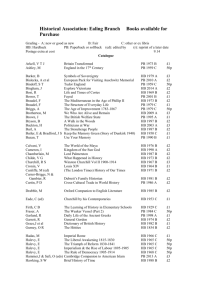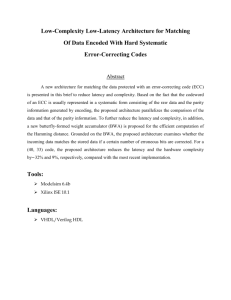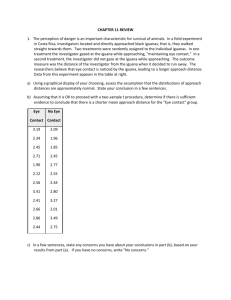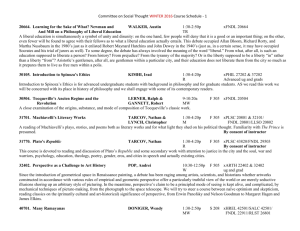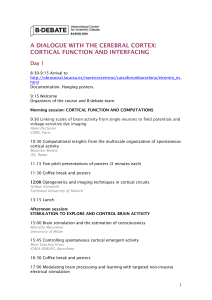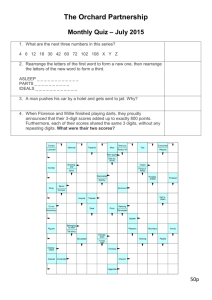3-nitropropionic acid (3NP) and manganese (Mn) are mitochondrial
advertisement
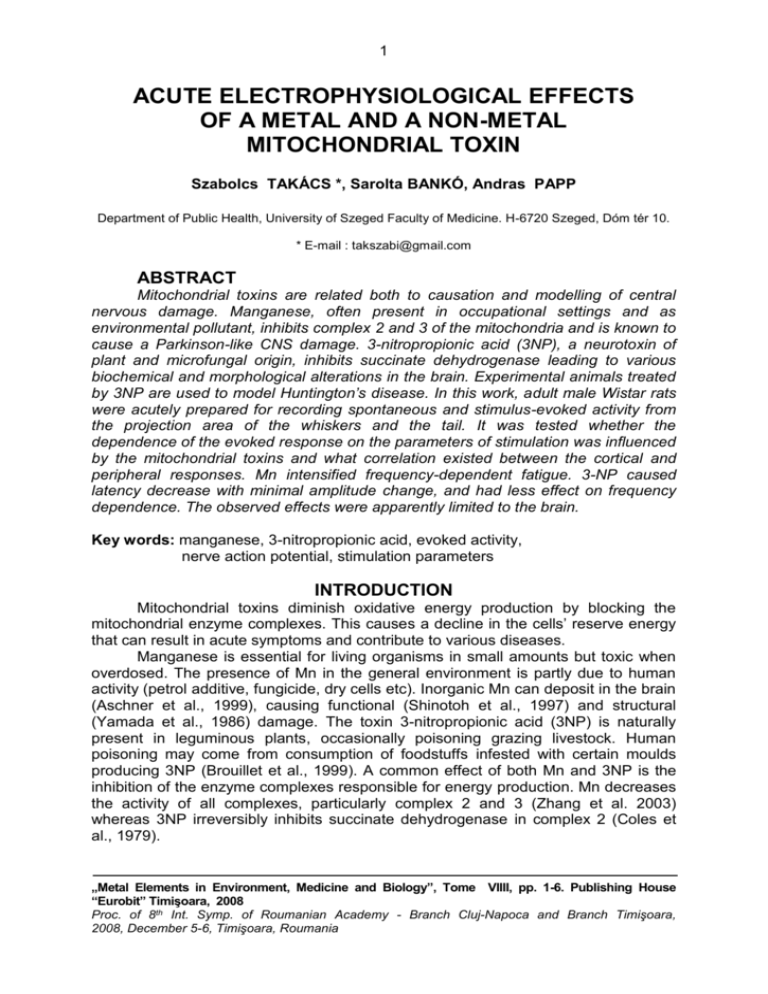
1 ACUTE ELECTROPHYSIOLOGICAL EFFECTS OF A METAL AND A NON-METAL MITOCHONDRIAL TOXIN Szabolcs TAKÁCS *, Sarolta BANKÓ, Andras PAPP Department of Public Health, University of Szeged Faculty of Medicine. H-6720 Szeged, Dóm tér 10. * E-mail : takszabi@gmail.com ABSTRACT Mitochondrial toxins are related both to causation and modelling of central nervous damage. Manganese, often present in occupational settings and as environmental pollutant, inhibits complex 2 and 3 of the mitochondria and is known to cause a Parkinson-like CNS damage. 3-nitropropionic acid (3NP), a neurotoxin of plant and microfungal origin, inhibits succinate dehydrogenase leading to various biochemical and morphological alterations in the brain. Experimental animals treated by 3NP are used to model Huntington’s disease. In this work, adult male Wistar rats were acutely prepared for recording spontaneous and stimulus-evoked activity from the projection area of the whiskers and the tail. It was tested whether the dependence of the evoked response on the parameters of stimulation was influenced by the mitochondrial toxins and what correlation existed between the cortical and peripheral responses. Mn intensified frequency-dependent fatigue. 3-NP caused latency decrease with minimal amplitude change, and had less effect on frequency dependence. The observed effects were apparently limited to the brain. Key words: manganese, 3-nitropropionic acid, evoked activity, nerve action potential, stimulation parameters INTRODUCTION Mitochondrial toxins diminish oxidative energy production by blocking the mitochondrial enzyme complexes. This causes a decline in the cells’ reserve energy that can result in acute symptoms and contribute to various diseases. Manganese is essential for living organisms in small amounts but toxic when overdosed. The presence of Mn in the general environment is partly due to human activity (petrol additive, fungicide, dry cells etc). Inorganic Mn can deposit in the brain (Aschner et al., 1999), causing functional (Shinotoh et al., 1997) and structural (Yamada et al., 1986) damage. The toxin 3-nitropropionic acid (3NP) is naturally present in leguminous plants, occasionally poisoning grazing livestock. Human poisoning may come from consumption of foodstuffs infested with certain moulds producing 3NP (Brouillet et al., 1999). A common effect of both Mn and 3NP is the inhibition of the enzyme complexes responsible for energy production. Mn decreases the activity of all complexes, particularly complex 2 and 3 (Zhang et al. 2003) whereas 3NP irreversibly inhibits succinate dehydrogenase in complex 2 (Coles et al., 1979). „Metal Elements in Environment, Medicine and Biology”, Tome VIIII, pp. 1-6. Publishing House “Eurobit” Timişoara, 2008 Proc. of 8th Int. Symp. of Roumanian Academy - Branch Cluj-Napoca and Branch Timişoara, 2008, December 5-6, Timişoara, Roumania 2 Although Mn and 3-NP both are mitochondrial blockers, there are many differences in their intra- and extra-mitochondrial mode of action which leads to completely dissimilar clinical pictures in chronic intoxications. The symptoms of excess Mn intake are, on the whole, called manganism, a state that can be very similar to Parkinson’s disease, while 3NP poisoning resembles Huntington’s disease and is used in an animal model of that (Brouillet et al., 1999). Since the function of the nervous system requires lots of energy, the mitochondrial damage is probably reflected in the electrical activity of the brain. Beside damage in energy production, the two substances studied have also more direct effects in the nervous system, so their excessive presence should be detectable by electrophysiology. To study this, we examined the changes of evoked activity in acute experiments in rats. MATERIALS AND METHODS Adult male Wistar rats (ca. 300 g) were given urethane (1000 mg/kg b.w.) ip. for anaesthesia. The left hemisphere was exposed by removing a part of the bony skull. Following a short recovery period, silver recording electrodes were placed on the surface of the cortex at the primary somatosensory projection area of the tail and the whiskers for measuring electrical activity. Evoked potentials (EPs) were triggered by 0.05 ms square electric stimuli that were delivered by pairs of needle electrodes placed in the contralateral whisker pad and in the tail base. To record the peripheral nerve responses another pair of needles were inserted in the tail 50 mm distally from the base. See Lukács and Szabó, 2007, for the recording techniques. First, in 8 rats for both substances, the dependence of the obtained cortical EP on parameters of the whisker stimulation was tested. The just-supramaximal stimulus strength (around 3 - 5 V) was determined first, then trains of 50 stimuli were given at frequency of 1, 2, 5 and 10 Hz. This sequence was done 3 times with 30 min intervals for control. Then the appropriate solution was given in an intraperitoneal injection, and further 4 records were taken. 3NP was given in a dose of 20 mg/kg, or Mn2+ (in form of MnCl2) in 50 mg/kg, both dissolved in distilled water. In another experiment both whiskers and tail of 8 rats was stimulated at 1 Hz. Most conditions were the same as in the previous set except that beside the corresponding cortical EPs, the tail nerve response was recorded also. The records were averaged, and their onset latency and peak-to-peak amplitude was measured. To eliminate individual variation, the latency and amplitude values were normalized to the mean of the control period (first 3 series). From these normalized data, group mean was calculated and plotted against the frequency (1 to 10 Hz) of stimulation, and any difference between the resulting curves before vs. after administration of the toxicant was sought for. In the second experiment, cortical and peripheral response parameters were plotted in the same graph to see their similar or dissimilar time trend, and their correlation was tested. RESULTS AND DISCUSSION Before application of either Mn or 3NP, or in the untreated parallel controls, the latency data normalized to control mean and plotted against frequency of stimulation gave a horizontal line, showing that stimulation with 10 Hz vs. 1 Hz had no effect on the latency (Fig. 1). After injection of Mn, the latency started to increase and developed nonlinear frequency dependence with maximum at 2 Hz. Treatment with 3NP induced latency decrease which increased in time (curve 4 to curve 7) and diminished with increasing stimulation frequency. 3 The time trend of the latency and amplitude of EPs obtained by whisker or tail base stimulation was investigated together and was compared to the trend of the peripheral response (nerve action potential) evoked by tail stimulation. Rel. Lat. 1.06 Rel. Lat. 1.025 1 1.04 2 3 4 1.02 1 1 2 3 4 0.975 5 6 7 5 6 0.95 7 1 0.98 0.925 1 2 5 10 Frequency, Hz 1 2 5 10 Frequency, Hz Fig. 1. Frequency dependence of the EP latency before and after administration of Mn (left) and 3NP (right). Curves 1 to 3 show values before, and 4 to 7 after, application. Group means of normalized individual data (see Methods). In the Mn-treated rats, the latency of the cortical EPs evoked by whisker or tail stimulation had a clear decreasing trend (Fig. 2, top left), while the amplitude of the EPs increased (Fig. 2, top right), but neither parameter of the tail nerve response had a noteworthy change. The correlation diagrams of Fig. 2 show that the two cortical responses changed together but independently of the peripheral response. Rel. Change Rel. Change yP = 0.0025x + 0.9974 1.05 1 2.2 0.95 1.8 2 yT = 0.1326x + 0.7171 R = 0.0062 R2 = 0.5773 yW = 0.0483x + 0.955 R2 = 0.384 yW = -0.0105x + 1.0177 0.9 yP = -0.0089x + 1.0531 2.6 R2 = 0.2082 1.4 R2 = 0.9216 yT = -0.0104x + 1.0174 0.85 R2 = 0.7271 1 0.6 0.8 1 2 Whiskers Lat. 3 Tail Lat. 4 5 Periph. Lat. 6 7 Record No 1 2 Whiskers Ampl. 3 5 Periph. Ampl. 6 7 Record No 2.5 1.04 yTP = 0,1243x + 0,8771 yWT = 2,1456x - 0,9847 R2 = 0,2759 R2 = 0,8398 Whiskers-Tail Whiskers-Periph. 1.9 yWP = -0,3137x + 1,2967 1 yWP = 0,0999x + 0,8994 Tail-Periph. R2 = 0,6623 R2 = 0,0429 0.96 Whiskers-Tail 1.3 Whiskers-Periph. yWT = 1,3816x - 0,3947 yTP = -0,1453x + 1,1471 R2 = 0,8437 Tail-Periph. R2 = 0,5916 0.92 0.92 4 Tail Ampl. 0.7 0.96 1 1.04 0.7 1.3 1.9 2.5 Fig. 2. Top: Relative change (compared to control mean) of the latency (left) and amplitude (right) of the cortical and peripheral evoked responses in Mn-treated rats. Record N° 1 to 3 was take before, and 4 to 7 after, Mn application. Bottom: correlation diagrams of the same data sets. Inserts: equations and correlation coefficients of the fitted straight lines. 4 In the rats treated with 3NP the effect was highly similar. Latency decrease and amplitude increase of the cortical responses evolved in parallel, shown by the linear 2 1.04 yTP = -0,131x + 1,135 yWT = 1,2673x - 0,2074 R2 = 0,0879 1 R2 = 0,3201 1.5 yWP = -0,2827x + 1,2831 yTP = -0,097x + 1,1384 R2 = 0,328 0.96 Whiskers-Tail Whiskers-Periph. Tail-Periph. yWT = 0,9995x + 0,0004 R2 = 0,8001 0.92 0.92 Whiskers-Tail Whiskers-Periph. Tail-Periph. 0.96 1 1.04 R2 = 0,0222 1 yWP = 0,141x + 0,8556 R2 = 0,0093 0.5 0.5 1 1.5 2 Fig. 3. Correlation diagrams of the latency (left) and amplitude (right) of cortical and peripheral responses obtained in 3NP-treated rats. Displayed as in Fig. 2. trend line standing at about 45 degrees inclination; but there was no change in the tail nerve response, as shown by the nearly horizontal trend lines. (Fig. 3). Mitochondrial inhibition is the obvious common point in the action of Mn and 3NP, and the cortical activity changes in inherited mitochondrial encephalopathy are known (Smith and Harding, 1993). The correlation diagrams suggest, however, that a cortex- or at least CNS-specific mechanism played a role, most probably the disturbance of glutamate turnover (Mn: Hazell and Norenberg, 1997; 3NP: Tavares at al., 2001). Electrophysiological recording may be of use in the study of mitochondrial toxins. REFERENCES 1. Aschner M., Vrana K.E., Zheng W. - Manganese uptake and distribution in the central nervous system (CNS), NeuroToxicol, 1999, 20, 173-180. 2. Brouillet E., Conde F., Beal M.F., Hantraye P. - Replicating Huntington's disease phenotype in experimental animals, Prog. Neurobiol., 1999, 59, 427-468. 3. Coles C.J., Edmondson D.E., Singer T.P. - Inactivation of succinate dehydrogenase by 3-nitropropionate, J. Biol. Chem, 1979, 254, 5161-5167. 4. Hazell A.S., Norenberg M.D. - Manganese decreased glutamate uptake in cultured astrocytes, Neurochemistry, 1997, 22, 1443-1447. 5. Lukács A., Szabó A. - Functional neurotoxic effects of heavy metal combinations given to rats during pre- and postnatal development, Centr. Eur. J. Occup. Environ. Med., 2007, 13, 299-304. 6. Shinotoh H., Snow B.J., Chu N.S., Huang C.C., Lu C.S., Lee.C., Takahashi.H., Calne D.B. - MRI and PET studies of manganese intoxicated monkeys, Neurology 1997, 45, 1199-1204. 7. Smith S.J., Harding A.E. - EEG and evoked potential findings in mitochondrial myopathies. J. Neurol. 1993, 240, 367-372. 8. Tavares R. G., Santos C. E., Tasca C. I., Wajner M., Souza D. O., Dutra-Filho C.S. - Inhibition of glutamate uptake into synaptic vesicles from rat brain by 3-nitropropionic acid in vitro, Exp. Neurol., 2001, 172, 250-254. 9. Yamada M., Ohno S., Okayasu I., Okeda R., Hatakeyama S., Watanabene H., Ushio K., Tsukagoshi H. - Chronic manganese poisoning: a neuropathological study with determination of manganese distribution, Acta Neuropathol., 1986, 70, 273-278. 10. Zhang S., Zhou Z., Fu J - Effect of manganese chloride exposure on liver and brain mitochondria function in rats, Environ. Res., 2003, 93, 149–157.
